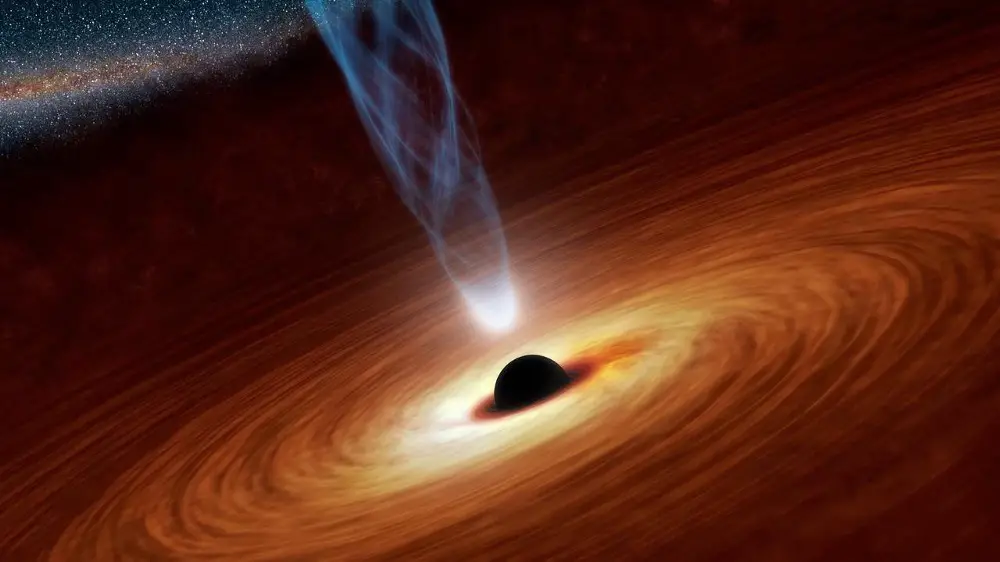Black holes are the enigma of the universe. They are the only things in the cosmos known to use their incredible gravitational force to trap and hold light. Scientists continue to find new things about them that boggle the mind. Here are a few of them.
Black holes aren’t all huge. They come in many shapes and sizes. Sure there are those that are at the center of a galaxy, causing everything to be swept up in them if things get too close, but there are black holes that can have the mass of a mountain or be the size of an atom.
Although Einstein’s theory of relativity explains how black holes are formed, the discovery of black holes was made by Karl Schwarzschild. He came up with a theory at the same time as Einstein’s famous one, and his work produced the Schwarzschild radius. This was a measurement of how small an object would have to be compressed to make a black hole.
When something is compressed, the object becomes denser and produces a greater gravitational force. There is a specific radius of a sphere that an object can be compressed to form a black hole.
Another discovery by physicist Stephen Hawking in 1974 explained that black holes could spit out material as well as take it in. Black hole evaporation, also known as Hawking radiation, occurs when a black hole’s mass is expelled out of the hole. Over time, the black hole will cease to exist since there is nothing left to expel.
Strange things happen with time around black holes. If it were possible to stick a guy named Stan in a black hole (which would be impossible since he would be pulled into nothingness) and put a friend of his named Fran outside the black hole, a curious thing would happen. According to Einstein’s theory of relativity, from Fran’s perspective, Stan’s time would appear as slowing while getting slower. Stan would think his time is normal, and that Fran was going much faster. This is the effect of the black hole when going at speeds close to the speed of light. Time and space are warped.
The event horizon of a black hole is the spot where the gravitational pull of the black hole can’t be escaped. That’s actually a good thing because it means one supermassive black hole can’t continue to get larger and eventually swallow up the universe. A black hole could be observed from a safe distance if we were ever able to get that close. The nearest black hole to Earth was discovered in May 2020, at 1,000 light-years away in the southern constellation of Telescopium.
You can’t “see” a black hole, even with any number of instruments or detecting equipment. For one, a black hole is black since no light can escape it. If scientists can’t see it, then how do they know it’s there? They look at the effects on things around a black hole, like how it forcefully pulls on stars or other celestial bodies, for example. By using instruments that can see these effects, such as a burst of x-rays from a star that is being pulled apart, scientists can “see” the entity acting on it.
Black holes are incredibly efficient at producing energy. Material near the black hole’s event horizon moves faster than material beyond the outer edges due to the super gravitational forces there. The material near the edge of the event horizon is heated to billions of degrees Fahrenheit, and the mass of the material is converted into energy. This produces what is called blackbody radiation. A black hole can transform 10% of this mass into energy. That’s quite a difference as compared to nuclear fusion, which can change only 0.7% of mass into energy.
Black holes are thought to be at the center of a galaxy, and yes, we have one in our own backyard. But we’ll be long gone before it poses a risk to Earth. Our own black hole is believed to be incredibly massive, four million times more massive than our Sun. Try to wrap your head around that.
An interesting thing happens when supermassive stars, much greater in size than our Sun, finally run out of nuclear fuel. These stars get overrun by gravity, and they’re unable to keep their shape. The core of the star collapses while other layers get blown into space. This is called a supernova. What’s left is an area that has virtually no volume and density that is infinite. That is exactly what a black hole is. No light can escape such a crushing place.
Some believe that a wormhole exists if you entered a black hole. A wormhole is a theoretical passage to another part of the universe. Current science is unable to explain how this could be, but there is no shortage of things to learn about wormholes, if they even exist. Others believe a black hole is just a crushing void. I think I’ll vote for the wormhole.




